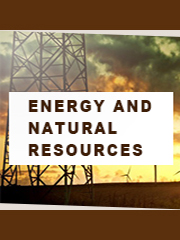TOP CATEGORY: Chemicals & Materials | Life Sciences | Banking & Finance | ICT Media

Download Report PDF Instantly
Report overview
The global Anti-Corrosion Materials for Wind Turbine Blade market was valued at US$ 162.8 million in 2023 and is projected to reach US$ 249.9 million by 2030, at a CAGR of 6.3% during the forecast period. The influence of COVID-19 and the Russia-Ukraine War were considered while estimating market sizes.
In the industry, the key players in the global Anti-Corrosion materials for wind turbine blade market are MEGA P&C, Mankiewicz, AkzoNobel, PPG, Aerox, Jotun, Bergolin, Duromar, Teknos, 3M, Feilu, Polytech, Fujikura Composites, etc. The top five manufacturers held 78% of the market. In terms of product type, coating accounted for 93%. In terms of application, repair account for 65%.
Anti-Corrosion materials for wind turbine blade is a protective coating that can resist the harsh environmental effects such as erosion.
This report aims to provide a comprehensive presentation of the global market for Anti-Corrosion Materials for Wind Turbine Blade, with both quantitative and qualitative analysis, to help readers develop business/growth strategies, assess the market competitive situation, analyze their position in the current marketplace, and make informed business decisions regarding Anti-Corrosion Materials for Wind Turbine Blade. This report contains market size and forecasts of Anti-Corrosion Materials for Wind Turbine Blade in global, including the following market information:
We surveyed the Anti-Corrosion Materials for Wind Turbine Blade manufacturers, suppliers, distributors and industry experts on this industry, involving the sales, revenue, demand, price change, product type, recent development and plan, industry trends, drivers, challenges, obstacles, and potential risks.
Total Market by Segment:
Chapter 1: Introduces the definition of Anti-Corrosion Materials for Wind Turbine Blade, market overview.
Chapter 2: Global Anti-Corrosion Materials for Wind Turbine Blade market size in revenue and volume.
Chapter 3: Detailed analysis of Anti-Corrosion Materials for Wind Turbine Blade manufacturers competitive landscape, price, sales and revenue market share, latest development plan, merger, and acquisition information, etc.
Chapter 4: Provides the analysis of various market segments by type, covering the market size and development potential of each market segment, to help readers find the blue ocean market in different market segments.
Chapter 5: Provides the analysis of various market segments by application, covering the market size and development potential of each market segment, to help readers find the blue ocean market in different downstream markets.
Chapter 6: Sales of Anti-Corrosion Materials for Wind Turbine Blade in regional level and country level. It provides a quantitative analysis of the market size and development potential of each region and its main countries and introduces the market development, future development prospects, market space of each country in the world.
Chapter 7: Provides profiles of key players, introducing the basic situation of the main companies in the market in detail, including product sales, revenue, price, gross margin, product introduction, recent development, etc.
Chapter 8: Global Anti-Corrosion Materials for Wind Turbine Blade capacity by region & country.
Chapter 9: Introduces the market dynamics, latest developments of the market, the driving factors and restrictive factors of the market, the challenges and risks faced by manufacturers in the industry, and the analysis of relevant policies in the industry.
Chapter 10: Analysis of industrial chain, including the upstream and downstream of the industry.
Chapter 11: The main points and conclusions of the report.